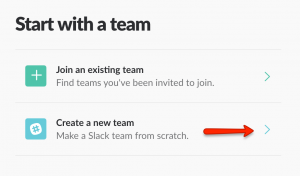If you want to build an engaged community Slack can really help. In this guide to using Slack for community building you’ll learn the power of real time.
This year is all about community building for New Media Europe. That’s why we’re constantly looking for ideas that are going to keep this awesome group of online creators engaged and talking to each other. When it comes to community building Slack is becoming a key ingredient. Read on to find out how it works but first let’s start with other ideas that have worked.
Other Places to Build an Online Community
 Facebook Group
Facebook Group
We have a very tight knit Facebook group (only open to previous attendees, speakers and sponsors) of the New Media Europe conference. This keeps the conversations topical and any spam down to a minimum. It’s also helpful that everyone tends to be on Facebook already. This means any new activity is usually displayed in the notifications area for out members.
 Email List
Email List
Yes, we have an email list. It works great! We haven’t pushed signups as hard as we could using lead magnets and other temptations. This means we have a modest sized mailing list of community members and those who are interested in what’s next with #NMEU.
 LinkedIn Group
LinkedIn Group
Last year I started a New Media Europe group on LinkedIn. This is open to everyone (not just previous visitors to our events) and as a result suffers a little more spam. This is because some people join simply to promote links. It’s an issue LinkedIn groups have faced for a while. Unless you’re really hot on moderating it’s tough to keep a LinkedIn group alive and on topic. It is also a professional social network and may not be suitable for all online communities.
Why Slack is The Next Big Thing for Online Communities
Here are 3 reasons why you should invite your community to a Slack channel:
- The real time nature of Slack is a winner.
- Members can bounce questions and ideas around together.
- It keeps your community engaged and alive.
Slack is not only great for communities even businesses are reporting a lower churn rate by inviting their customers to join them on Slack. Those that are already using Slack will now be active inside your community. If a community member or customer isn’t using the platform yet you’ll be introducing them to something great!
How to Create a Slack Channel for Your Community
 Start by creating a new team on Slack for your brand if you haven’t done so already. You’ll then be asked to confirm your email address, enter your name and tell a little more about your Slack team. You’ll want to select Shared interest group in the drop down menu followed by the rough size of your community.
Start by creating a new team on Slack for your brand if you haven’t done so already. You’ll then be asked to confirm your email address, enter your name and tell a little more about your Slack team. You’ll want to select Shared interest group in the drop down menu followed by the rough size of your community.
Next you can head into Team Settings and make sure you add your logo to the Team Icon section.
How to Name Your Slack Channel
You may wish to create a more than one channel. Perhaps a channel for paid up members of your community or those who have attended your previous events. There could also be a bigger channel for anyone interested in your community to join. This is what I’ve created for New Media Europe:
#newmediaeurope – a channel open to anyone interested in our community who’d like to join and find out more.
#nmeu-vip – an invitation only channel for those who’ve been a part of a previous New Media Europe event.
How to Join a Slack Team

It’s super challenging to automate signups to a slack team. The most you can do as an admin is allow email signups from certain domains like @newmediaeuope.com. That doesn’t help if your community all have different email addresses. In a future article I’ll write about how you can automate Slack channel invitations and grow your community on autopilot. You should sign up to our Slack community to hear more…
Join #newmediaeurope! Enter your name and email address below. Then check and confirm you’d like to join our Slack community in your email.








